Big Ten Basketball Storylines to Watch, Part 2

Marc-Grégor Campredon
ICYMI, Part 1 (MSU, MINN, NW, PUR, IND, ILL, OSU)
College basketball is almost here, so I’ll be taking a look around the Big Ten to size up Michigan’s competition.
Wisconsin and Michigan: reload or rebuild?
Kenpom’s preseason projections have the two teams at right about the same spot (#31 for Wisconsin, #32 for Michigan), and the similarities between the two programs are rather striking. In the last installment, I wrote this:
Last season, three Big Ten teams made it to the Sweet 16. Those three were the only teams in the Big Ten ranked in the Top 25 in Kenpom’s or Sagarin’s final rankings – and the three finished in the Top 25 in both. They were Purdue (the Big Ten regular season champs by two games), Michigan (the four wins in four days Big Ten Tournament champs), and Wisconsin (who knocked off the NCAA Tournament’s top overall seed). For what was somewhat of a down year in the conference, a trio of teams coalesced into a top tier by the end of the season.
Purdue retains almost their entire core (with one notable exception) from last season, while Michigan and Wisconsin do not.
The similarities between the two programs are striking. Nobody else in the Big Ten lost more from their senior class than Wisconsin: Nigel Hayes and Bronson Koenig were three-year starters who were rotation pieces as part of two Final Four squads – adding in Vitto Brown and Zak Showalter, the Badgers had four starters in their final year of eligibility last season. Together, they played over half of Wisconsin’s minutes. Michigan only lost two seniors, but Derrick Walton – who blossomed into a star late in his career – and Zak Irvin were cornerstones of the program; they led Michigan in minutes, points, assists, and shot attempts. DJ Wilson wasn’t a senior, but his absence will be acutely felt as well: two-way big men with an NBA frame and NBA skill-set are rare commodities in college hoops.
Wisconsin and Michigan also have the same prospective strength entering this season –their centers. Ethan Happ has been a fixture in the Badger lineup for two years, and he should be one of the best players in the country. His statistical profile is a marvel, as he scores and rebounds like a traditional big man (he doesn’t shoot from further than ten feet away from the hoop, gets fouled a lot and bricks a lot of free throws, and was in the top ten of both offensive and defensive rebounding rate in Big Ten play last season), but he’s a rare defensive talent (he’s a great shot-blocker and led the Big Ten in steal rate at 6’10) and led Wisconsin in assist rate by distributing from the post.
Michigan’s Moritz Wagner is also intriguing, as he burst onto the scene a year ago as a sophomore, flirted with an early entry into the NBA Draft, and returns as a popular preseason First-Team All-Big Ten selection. Wagner is less proven than Happ (and his defense is far worse), but his offensive versatility is quite impressive. Moe shot 66% from inside the arc, 40% from outside, and 73% from the free throw line; he’s a nearly unguardable weapon in Michigan’s ball-screen offense; he can beat smaller or comparably-sized defenders off the dribble with an arsenal of moves. Wagner’s presence unlocks plenty of five-out lineups for the Wolverines because of his shooting ability as well.
The Big Ten is stacked at the five this season, with Happ, Wagner, Michigan State’s Nick Ward, Purdue’s Isaac Haas, and solid starters at Minnesota, Northwestern, and Penn State. Happ and Wagner are probably the best of the bunch, and they’ll be integral in Wisconsin and Michigan’s efforts to maintain their success from last season.
[More on Wisconsin, Michigan, and the rest of the league after the JUMP]
Bryan Fuller
Both programs will rely heavily on newcomers and players stepping into bigger roles. Behind Happ and Wagner are several unknowns, and which guys can step up and complement the star big men will be crucial subplots this season.
Michigan appears to be somewhat further along in that regard. The Wolverines have two players with significant experience alongside Wagner – Muhammad-Ali Abdur-Rahkman has been a fixture in the starting lineup for most of the last two and a half seasons and Duncan Robinson has been a key rotation piece – but both have been role players throughout their careers. Beyond those two, Michigan will have to rely on transfers (Charles Matthews and Jaaron Simmons), freshmen (Eli Brooks and Isaiah Livers), or sophomores with a combined 88 career points (Xavier Simpson, Jon Teske, and Ibi Watson). Matthews is former blue-chip recruit and Kentucky castoff; he’s received plenty of hype and appears to have the tools to back it up. Michigan should be fine at the two, three, and four – though depth is a concern – but the point guard spot is unsettled and the Wolverines figure to take a big step back from the lofty standard they’ve set at the position over the better part of the last decade.
Wisconsin has a definite starter at the point guard position. D’Mitrik Trice was the Badgers’ sixth man last season and was about what you’d expect for an undersized freshman point guard: he shot well from three (42%), terribly from two (34%), and had similar assist and turnover rates a year ago. He’ll be joined in the backcourt by another sophomore, Brevin Pritzl, who shot the ball well in Wisconsin’s overseas trip this offseason, and two freshmen – four-star Brad Davison and three-star Kobe King. Junior forwards Khalil Iverson (who’s undersized and a strong rebounder) and Alex Illikainen (who’s taller but played less last season than he did as a freshman) figure to start, and fellow veteran Charlie Thomas will be a part of the rotation, but 6’10 freshman Nathan Reuvers – the best recruit in their 2017 class – could push for playing time. Wisconsin has a long track record of developing reserve underclassmen into solid starters, and the Trice-Pritzl backcourt should be passable at worst, but there’s a stark lack of clarity at the forward spots (and spacing will likely be an issue there).
Both Michigan and Wisconsin definitely have more questions than the rest of the teams that figure to be strong contenders for NCAA Tournament spots, but it wouldn’t be a surprise to see either of them finish in the top three of the conference. It’s a transition year for both – and the departure of Wisconsin’s seniors signals that the vestiges of the Bo Ryan era are disappearing – but the guess here is that both will probably be fine. Michigan has more experience, so I’d hazard a guess that they’ll be a bit better, but Happ could almost singlehandedly anchor one of the nation’s best defenses.
Maryland’s succeeding in their new home
In their three seasons since entering the Big Ten, the Terrapins have finished alone in second place, tied for third, and tied for second in the Big Ten standings. They’ve tied with Purdue for the second-most conference wins during that span (behind Wisconsin). They’ve reached the NCAA Tournament in each season, never worse than a six-seed, after four straight years without an appearance – including three under current head coach Mark Turgeon. In the ACC, he was 59-43 overall. In the Big Ten, he’s 79-25. Needless to say, he’s probably enjoyed his new conference a lot more.
Their three-year run coincided with the career of Melo Trimble. From the moment he stepped on campus, he was one of the better players in the conference, and was Maryland’s clear on-court leader from his freshman season on. That excellent freshman year never translated to improvement – each season his usage rate ticked up and his efficiency ticked down, and his absurd ability to draw fouls in his first season was muted afterwards. His three-point percentage fell by ten points from that freshman year to his sophomore and junior years as well. It made sense for Trimble to leave for the NBA a season early (he probably should have left earlier, to be honest), even if he went undrafted and will be playing in the D-League in hopes of cracking an NBA roster.
For his first two seasons, Trimble was surrounded by veterans; last season, he started alongside three freshmen – point guard Anthony Cowan and wings Kevin Huerter and Justin Jackson. Those three were quality players as freshmen and will be relied on to be Maryland’s best players this season. Cowan is undersized, but had a Trimblesque ability to draw fouls and shot well at the rim given his stature; Huerter has good length for his position, passes the ball well, and takes almost 2/3 of his shots from three-point range (and hit them at 38% as a freshman); Jackson fits perfectly in the 3-and-D mold and the Canadian could very well be a lottery pick after turning down a chance to leave after last season.
In 2016-17, there was plenty of dissonance between Maryland’s computer ranking and their win-loss record. Basically they were the anti-Wisconsin, as advanced metrics really did not like the Terrapins. Their non-conference showing was the culprit: they went 12-1 before Big Ten play started, but three of those wins (Georgetown, Kansas State, Oklahoma State) came by just one point and they had a couple close scares in games against mid- or low-major teams. At one point, they ascended to 17th in the AP and Coaches polls with a 20-2 record, and were ranked 40th by Kenpom. Eventually that rating was validated, as they lost seven of their last eleven games and bounced in the first round of the NCAA Tournament; Xavier was actually favored by Kenpom despite being an 11-seed facing a 6.
Maryland’s showing since entering the Big Ten has been impressive, even if they haven’t had any truly great teams. Their sophomore class will be instrumental, but a couple seniors (big man Michal Cekovsky and guards Jaylen Brantley and Dion Wiley) are players who figure to feature prominently in the rotation as well. Maryland has plenty of options at center, though none of them distinguished themselves last season – freshman Bruno Fernando and/or journeyman grad transfer Sean Obi could figure into the mix there. Maryland doesn’t seem to have the depth to challenge for the Big Ten title, but this looks like an NCAA Tournament team and any combination of Cowan, Huerter, and Jackson could emerge into All-Conference level players.
Sophomores lead at Iowa and Penn State
Maryland isn’t the only Big Ten program that will lean heavily on its second-year players, as Iowa and Penn State are each returning key freshmen from last season. Iowa was led by senior swingman Peter Jok – who was at the top of the conference in points per game – but their next three top scorers were freshmen. Penn State was led in usage rate by two freshmen who were far ahead of the pack, and had an elite rim protector who was a freshman as well. Neither team made the NCAA Tournament last season, and both still project to need some more seasoning before breaking into the top half of the conference. The Hawkeyes and the Nittany Lions both played at a breakneck pace relative to Big Ten standards, and there are fun players on each squad; perhaps one could break through ahead of schedule.
Iowa’s sophomore class is headlined by two big men and their point guard. Tyler Cook is a great athlete and was a highly-regarded recruit, and as an above-the-rim player at 6’9, he was very tough to keep off of the offensive glass a season ago. Cordell Pemsl was a relatively unknown player, but he dropped 18 points or more four times in the first month of his freshman season and shot 62% from the field a year ago. Point guard Jordan Bohannon led the Hawkeyes in minutes and was one of the better shooters and distributors at the position in the Big Ten. Fran McCaffery likes to have a deep rotation, and it figures to be more of the same. Former walk-on wing Nicholas Baer is a junior who will miss the beginning of the season, leaving room for Ahmad Wagner, Dom Uhl, and freshman Luka Garza in the frontcourt. The starter in the backcourt next to Bohannon figures to be fellow sophomore Isaiah Moss, though a couple of juniors in Brady Ellingson and Christian Williams will be solidly in the rotation.
Penn State returns five players with significant starting experience, three of whom will be sophomores. Tony Carr was the best recruit to choose Penn State in a long time and showed some flashes of potential as well as growing pains as he played a ton of minutes at the point from the beginning of the season. Lamar Stevens, an attacking combo forward, was a nice sidekick for Carr, though – like most of Penn State’s players – he was inefficient. Mike Watkins is an intimidating paint presence who finished eighth nationally in block rate as a freshman and his high shooting percentage was an anomaly on last season’s roster. The other two starters will likely be senior Shep Garner, who was the alpha dog before Carr arrived (and went to the same high school as Carr and Stevens) and Josh Reaves, a defensive specialist on the wing. The rest of the rotation behind those five is unproven.
I have more faith in Iowa’s ability to exceed expectations than I do in Penn State’s – McCaffery is a solid coach and Penn State’s Pat Chambers hasn’t come close to making the NCAA Tournament in six seasons in Happy Valley (that announcers always praise his teams’ ability to play hard seems like an unintentionally backhanded compliment as they are rarely good at anything else). I like Penn State’s personnel – especially Carr and Watkins – a little bit more, but winning there is quite difficult. The Magic 8 Ball says “ask again later” for both of these teams.
Tim Miles fighting for survival
Since reaching the NCAA Tournament in his second season in Lincoln, Tim Miles’s Nebrasketball program has been very disappointing: in three years, they haven’t had a winning record or finished with more than six conference wins. In the year immediately following that appearance, they dropped from 56th to 121st nationally in Kenpom’s rankings, despite returning almost all of their key players from that breakthrough squad. Nebraska has never had a quality basketball program, but a recent investment in their facilities and surprisingly strong fan support – this isn’t Penn State, by any means – might wind up putting some pressure on the new Husker Athletic Director to make a change if there isn’t improvement this season.
More concerning than Miles’s recent run of mediocrity is his exodus of transfers, most of which blindsided him. This past offseason, four Huskers – Michael Jacobson, Ed Morrow, Jeriah Horne, and Nick Fuller – departed from the program. Jacobson had started over 50 games; Morrow was probably Nebraska’s best frontcourt player. Last offseason, arguably their best player, Andrew White III, took a grad transfer to Syracuse. The season before, multi-year starting center Walter Pitchford stayed at Nebraska but quit the team. Miles has recruited plenty of transfers to Lincoln himself, but the lack of continuity and inability to develop four-year players is a bad sign for the program’s long-term health, even if transfers have become more common across college hoops.
The Huskers also lost point guard Tai Webster, their best player from a year ago, to graduation. Their backcourt appears to be set with Glynn Watson and Anton Gill – Watson shined alongside Webster and Gill, a former Louisville transfer, was injured before getting a chance to show off his potential. An influx of transfers in the frontcourt, including former blue-chip recruit Isaac Copeland (from Georgetown) and shot-blocking grad transfer Duby Okeke (from Winthrop) will help mitigate the losses there; sophomore Jordy Tshimanga (not that Tshimanga) showed good mobility for his size last season and could play a lot. Wings Thomas Allen – a freshman who originally had committed to NC State – and junior Jack McVeigh – who took most of his shots from three-point range last season but only made 34% – will be relied on to space the floor. Sophomore combo forward Isaiah Roby is athletic but was woefully inefficient a year ago.
Unless Copeland is terrific, it seems like it will be another lost season for Nebraska. The significant personnel turnover can’t have been much of a positive, as the roster has very little continuity and probably not much cohesion. Miles has surprised before – as his NCAA Tournament team was also slated to be near the bottom of the league – but it seems likely that the Huskers will finish in the bottom four of the Big Ten.
The Big Ten’s least-favorite ball-and-chain
Rutgers is still a part of the league, and after winning just six conference games over three seasons, the Cable Subscribers figure to be near the bottom of the league again. Second-year head coach Steve Pikiell is an unmistakable upgrade over his predecessor, but the magnitude of the effort he needs to put in to get Rutgers to respectability is immense. Last season, they went 11-1 against an abysmal non-conference schedule (and lost to the only good team on it, which was part of the ACC-Big Ten Challenge), before winning three regular season Big Ten games: Nebraska by one, at Penn State by two, and Illinois by three. They upset a clearly checked-out Ohio State squad in the first round of the Big Ten Tournament, the program’s highlight since entering the league.
Rutgers returns lead guard Corey Sanders – now a junior – a remarkably high-usage and low-efficiency player. Undersized rebounding four man Deshawn Freeman and a pesky defender at guard in Mike Williams are also back. A few key departures hurt though, and while the Cable Subscribers may be incrementally better, things are still quite bleak. The only drama will be whether they avoid finishing in last place in the Big Ten for the first time.
November 9th, 2017 at 4:44 PM ^
November 9th, 2017 at 4:44 PM ^
I went to Wisconsin's exhitbition game against Northern Iowa. They started both halves cold, I think UNI had a 10-2 lead before UW went on a 20 point run or something. It was never really close after that, but UNI did cut the deficit to I think single digits early in the second half.
Kobe King was the one player that stood out to me (in a positive way - they were also giving a lot of playing time to a backup center from Europe who looked really slow). I'm surprised to hear he was a 3-star, he looked the Badger's best player not named Ethan. Of course, it was an exhibtion against a UNI squad that isn't what it was a few years ago. But he is related to a member of the fab-five, so I'll give him the benefit of the doubt.
November 9th, 2017 at 4:55 PM ^
Not likely, but this year is probably the best chance they'll ever have...
November 9th, 2017 at 5:18 PM ^
I would prefer a similar format to preseason football as opposed to the Draftageddon
November 9th, 2017 at 6:00 PM ^
{delete}
November 9th, 2017 at 9:12 PM ^
November 9th, 2017 at 9:29 PM ^
Point guard is going to be a huge factor for Michigan. Otherwise, they may well be better than last year.

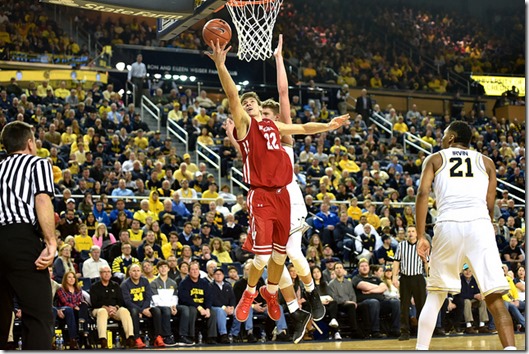
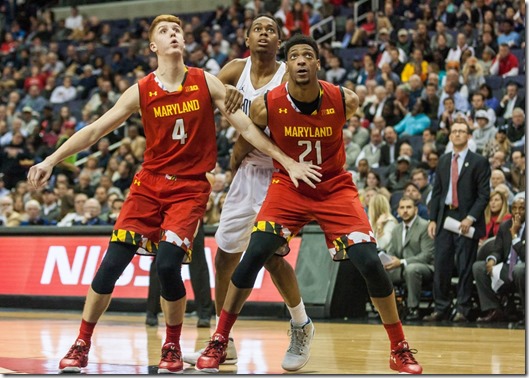
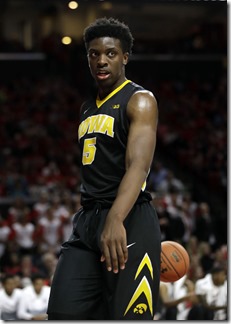
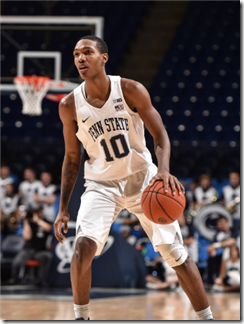
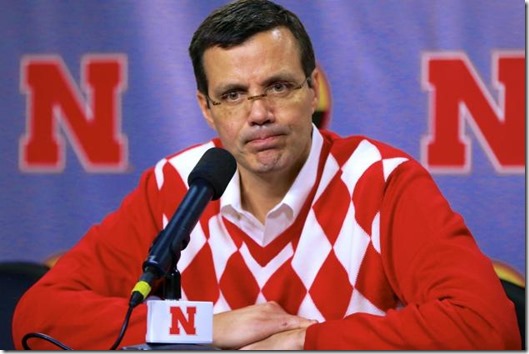
Comments